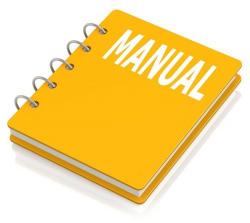Harley Davidson CLE/TLE Sidecar Models 1979-1984 Workshop Repair & Service Manual
Catalog:
Model:
Complete digital official shop manual contains service, maintenance, and troubleshooting information for the Harley Davidson CLE/TLE Sidecar Models 1979-1984. Diagnostic and repair procedures are covered in great detail to repair, maintain, rebuild, refurbish or restore your motorcycle like a professional mechanic in local service/repair workshop. This cost-effective quality manual is 100% complete and intact as should be without any missing pages. It is the same factory shop manual used by dealers that guaranteed to be fully functional to save your precious time.
This manual for Harley Davidson CLE/TLE Sidecar Models 1979-1984 is divided into different sections. Each section covers a specific component or system and, in addition to the standard service procedures, includes disassembling, inspecting, and assembling instructions. A table of contents is placed at the beginning of each section. Pages are easily found by category, and each page is expandable for great detail. It is in the cross-platform PDF document format so that it works like a charm on all kinds of devices. You do not need to be skilled with a computer to use the manual.
MAKE: Harley Davidson
--- --- --- --- --- --- --- --- ---
MODEL: CLE/TLE Sidecar Models (1979-1984 CLE; 1983 & 1984 TLE)
--- --- --- --- --- --- --- --- ---
YEAR: 1979, 1980, 1981, 1982, 1983, 1984
"'79-'84 CLE_TLE Sidecar.pdf"
64 pages
EXCERPT:
FIBERGLASS BODY CARE AND REPAIR
TYPES OF FINISHES
There are two types of fiberglass material finishes:
1. Gel Coat finish: This finish is made of a special pigment and blended polyester resin several thousandths of an inch thick.
2. Painted finish: This finish is painted on a " paintable" grey colored Gel Coat using standard painting procedure.
Identifying Finish
It is difficult to identify which finish has been used on a sidecar body. Generally, standard colors; e.g., black or white, are Gel Coat finishes. Most other colors are painted finishes.
If the finish had been damaged and a grey undercoat is visible, a painted finish is indicated. (The grey undercoat is a paintable Gel Coat.)
CARE OF FINISHES
The Gel Coat finish requires minimum care and can be kept new looking by following these easy maintenance rules:
Clean, buff and wax the exterior periodically to renew finish.
An automotive wax type cleaner containing fine rubbing compound is suitable for removing minor scratches and scuffs. Scratches which are not removed by the rubbing compound can be removed by wet sanding with 400 grit sandpaper. Then wet sand with 600 grit sandpaper, rebuff and apply wax polish.
Care should be taken not to cut through the gel coat surface when buffing. A power buffer may be used with care or the surface may be buffed by hand, using a rubbing compound.
REPAIRS
Patch and fill in deep scratches, scars and small breaks.
Repair any major breaks as soon as possible, to avoid any additional damage.
For damage to the gel coat finish, a can of Gel Coat of the same color and a small amount of catalyst is needed.
For deeper holes, breaks, or gouges, some fiberglass mat and pre-accelerated polyester resin will also be required. Gel Coat, catalyst and the other materials including fiberglass mat, and pre-accelerated polyester resin are available at most marine or automotive supply stores.
NOTE
If Gel Coat of matching color cannot be obtained, the entire body must be painted.
Damage to the painted type finish can be repaired by sanding, priming and painting using regular painting procedure.
SURFACE FINISHING
Gel Coat Touch-Up and Surface Repairs
This type of damage may be classified as damage to the gel coat only, or a hole or gouge that is deep enough to slightly penetrate fiberglass material. Repair as follows:
1. To be sure that the area to be patched is dry, clean and free of any wax or oil, wash with lacquer thinner.
2. Roughen the bottom and sides of the damaged area, using a power drill with a burr attachment.
Feather the edge surrounding the scratch or gouge, being careful not to undercut this edge. See Figure4-1.
Figure 4-1. Roughing Damaged Area
...





